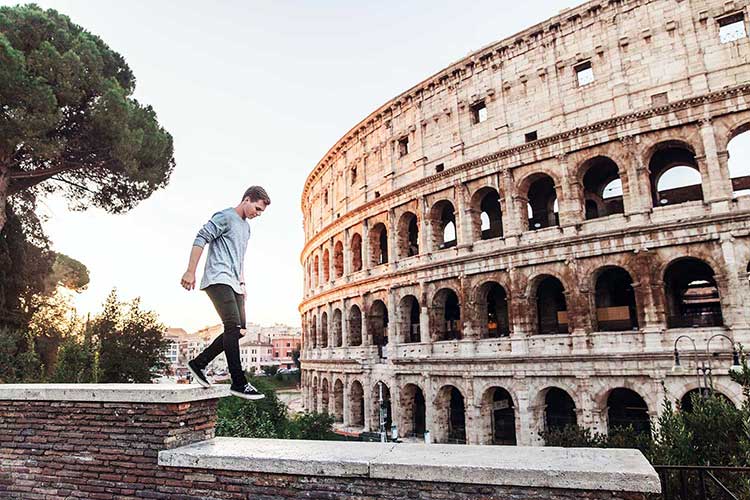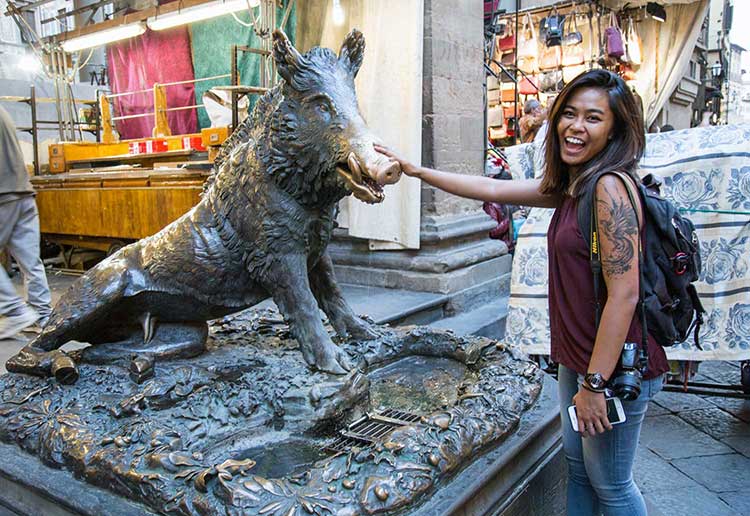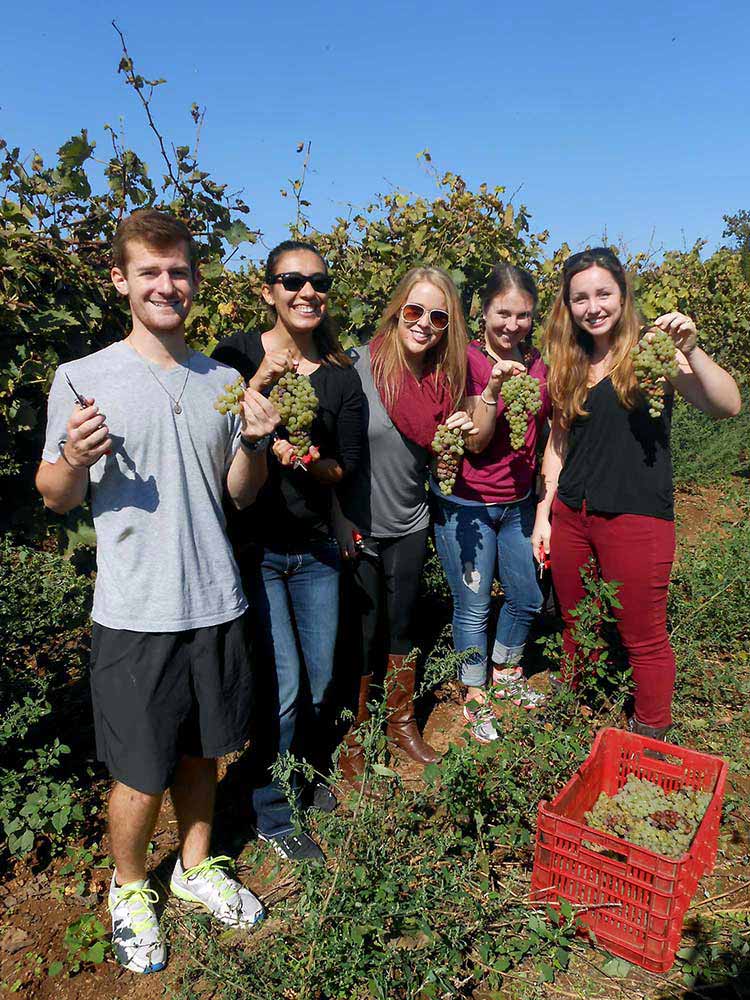
Study + Internship in Florence
CEA CAPA Florence Center
Starting at $8,295
Study abroad in Italy, which has long been a crossroads of thought and culture, a center of artistic, economic, culinary, and religious influence, and a destination for globally-minded students. Studying in either Rome or Florence, you will immerse yourself in centuries of art, architecture, and urban development, while feeling contemporary Italy's energy around current trends in sustainability, migration, food, and design. Whether sitting in a piazza over an espresso or a gelato, exploring Renaissance art and architecture, or enjoying a soccer game, your experiences will enhance and expand your coursework.

The birthplace of the Italian Renaissance, Florence rose to prominence in the early 15th century for advocating the arts and cultivatin...
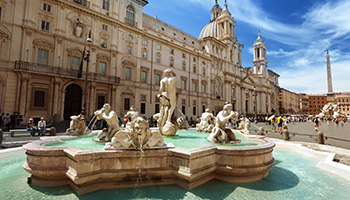
Thousands of years of history are on display in Rome. The ancient world, the Italian Renaissance and the modern world come together in ...

CEA CAPA Florence Center
Starting at $8,295
The CEA CAPA Florence Center provides instruction in the disciplines of liberal arts, business, and social sciences, with courses that turn the city of Florence into a living classroom. Here, you'll c...
Santa Reparata International School of Art (SRISA) is an independent, non-profit institution established in 1970. SRISA upholds a strong reputation in studio art and liberal arts instruction, and is c...
Located in the historic surroundings of Italy’s capital city, the CEA CAPA Rome Center offers interdisciplinary...
"Study abroad was so fun in Rome! I got to meet a lot of new friends and make a ton of memories that I will remember forever. The staff was amazing as well! This semester I also learned a lot about myself that I wouldn’t have been able to learn ..."
"My summer in Rome was an unforgettable experience that I can't stop recommending! I loved living in the city and learning about its history simultaneously. Immersing in the Roman Empire while hearing its stories was one of my favorite parts. Italy of..."
"I really loved this program. The staff were amazing and so helpful and I met some amazing new people. I was able to explore a new city and learn a new culture. The classes were engaging and the professors truly wanted to see students succeed. Through..."
"What I appreciated most about my experience with CEA CAPA Florence was how integrated my program was with the host city and culture. Because the CEA CAPA Florence building is located in such a lively and bustling part of the city (Santa Croce), it re..."
"My time studying abroad was the most enriching experience of my life so far. Despite only being abroad with my class for 6 weeks, I feel as though I spent months there due to the amount of knowledge and perspective on the world I gained throughout my..."
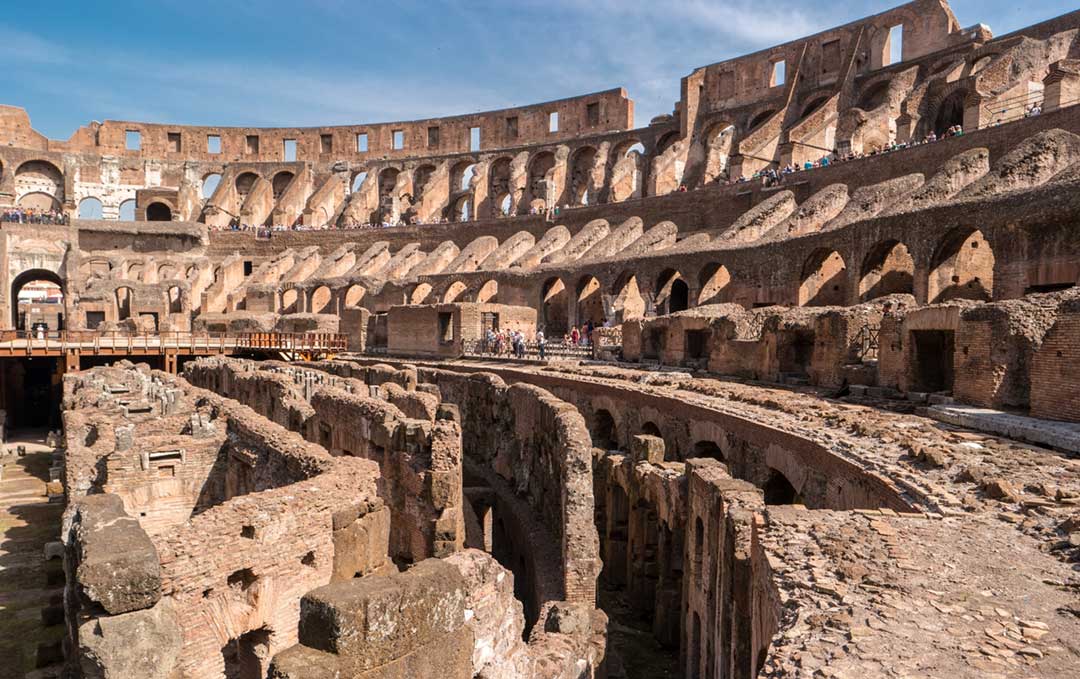
The Colosseum in Rome, an ancient amphitheater dating back to AD 80, is a testament to Roman engineering and architecture. This monumental structure is the largest ancient amphitheater ever built and is still the largest standing amphitheater in the world. The Colosseum once hosted gladiatorial contests and public spectacles, accommodating up to 80,000 spectators. Today, it stands as a symbol of Rome's long history.
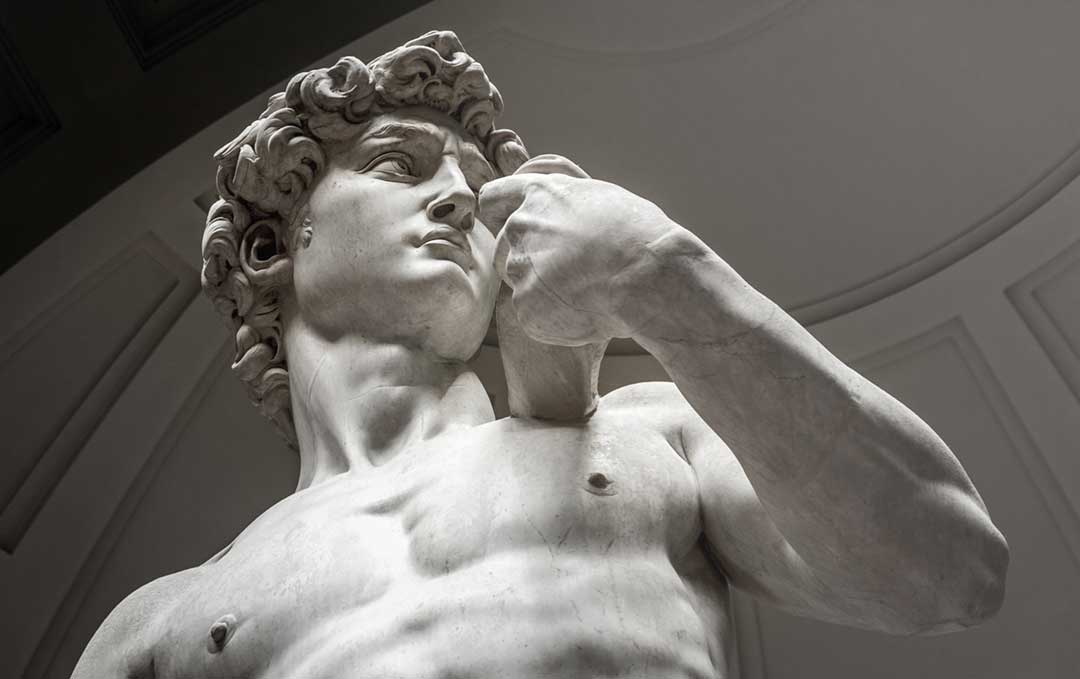
The statue of David, housed in the Galleria dell'Accademia in Florence, is a masterpiece by Michelangelo. This iconic marble sculpture, standing 17 feet tall, represents the biblical hero David and is celebrated for its exquisite detail and proportion. A visit to the Accademia offers not just a glimpse of this renowned artwork but also offers a broader look at Renaissance art and history.
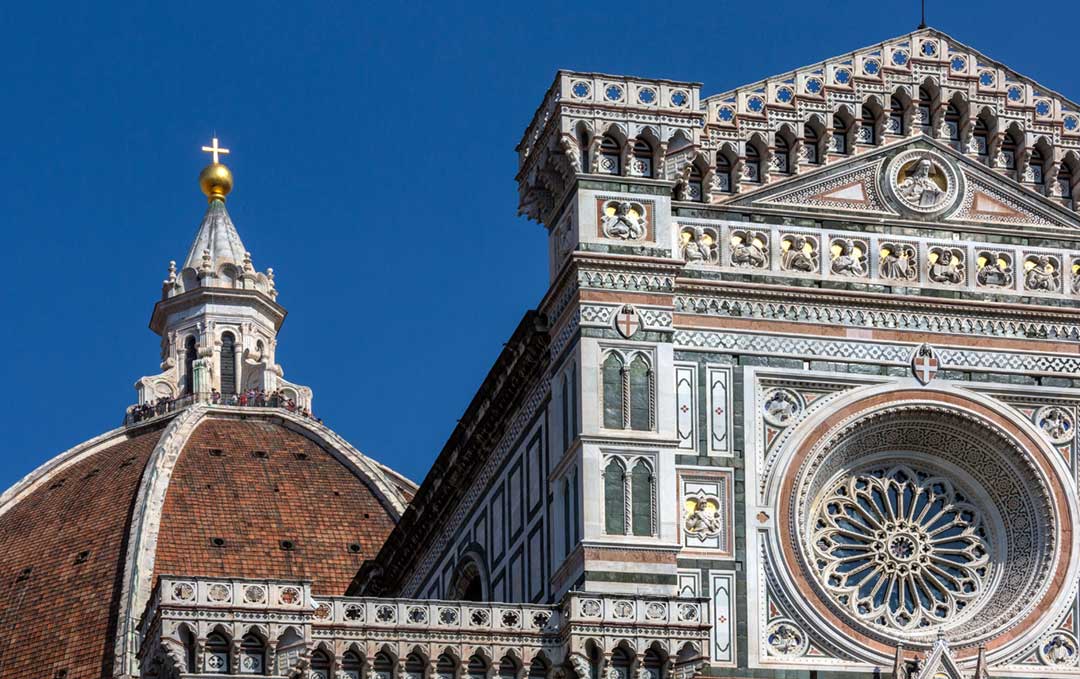
Florence's Duomo, officially known as the Cathedral of Santa Maria del Fiore, is a marvel of Gothic architecture. Built over 72 years beginning in 1296, its stunning façade and iconic dome designed by Filippo Brunelleschi dominate the city skyline. Climbing to the top offers breathtaking views of Florence and insight into the architectural ingenuity of the Renaissance.

Vatican City, the smallest independent state in the world, is the spiritual and administrative center of the Roman Catholic Church. Home to the Pope, it boasts landmarks like St. Peter's Basilica, the Sistine Chapel with Michelangelo's ceiling, and the Vatican Museums. A visit here is a journey through centuries of art, history, and faith.
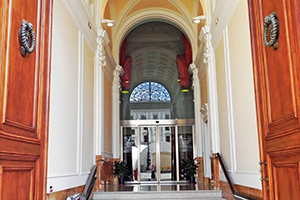

The CEA CAPA Florence Center provides instruction in the disciplines of liberal arts, business, and social sciences, with courses that turn the city of Florence into a living classroom. Here, you'll choose from a wide array of courses offered in English, actively improving your language skills while settling into daily life in a city rich in culture and history.
Designed to exploit the educational opportunities that make Florence and Italy remarkable, programs feature courses in art history, anthropology, business, history, gender studies, Italian language, management, marketing, political science, and sociology. Lessons incorporate activities that take you out of the classroom and into the city and community to visit museums, local businesses, food markets, artisans’ workshops, and immigration centers. CEA CAPA Florence Center faculty are committed to fostering intellectual and cultural growth, encouraging you to apply classroom learning to daily life experiences and draw connections between formal and informal lessons. Active study allows you to gain a historical, social, and commercial understanding of Florence and Italy, while developing an international cultural fluency that can help you succeed in our increasingly globalized world.
CEA CAPA Florence Center courses will urge you to critically reflect upon and articulate your own national, cultural, and social identities. Active class participation provides the opportunity for interaction and collaboration—both critical factors in academic and professional success.
Courses at the CEA CAPA Florence Center are transcripted by the University of New Haven (UNH), CEA CAPA’s School of Record.
Courses taught at the CEA CAPA Florence Center have been designed in conjunction with, and approved by, the University of New Haven (UNH). In addition, faculty appointments have been approved by UNH. After the successful completion of a session at the CEA CAPA Florence Center, you will receive credit for your work from UNH.
Located in Connecticut, the University of New Haven is a student-focused, comprehensive university that’s fully accredited by the New England Commission of Higher Education (NECHE). The agreement between CEA CAPA and UNH follows the highest standards of good practice in education abroad and satisfies the rigorous requirements of the University's institutional accreditor, making credits earned at the CEA CAPA Florence Center easily transferable to US-accredited institutions. Learn more about UNH's service as the School of Record for CEA CAPA
The following grading scale is in use for CEA CAPA center-delivered syllabi:
| DESCRIPTOR | ALPHA | NUMERIC | GPA | REQUIREMENT/EXPECTATION |
|---|---|---|---|---|
| Outstanding (High Distinction) |
A | 93+ | 4.0 | Maximum grade: In addition to description for grade "A-", the participant shows detailed understanding of materials about which he or she can show independent analytical ability. This means the ability to question an issue from different perspectives and evaluate responses in an objective manner. |
| Excellent (Distinction) |
A- | 90 - 92.99 | 3.7 | Participant shows understanding of literature beyond the textbook/class hand-outs/class notes, and the work shows a high level of independent thought, presents informed and insightful discussion, and demonstrates a well-developed capacity for evaluation. |
| Very good (High Credit) |
B+ | 87 - 89.99 | 3.3 | Shows evidence of a capacity to generalize from the taught content, or the material in literature, or from class lectures in an informed manner. Also, the work demonstrates a capacity to integrate personal reflection into the discussion and an appreciation of a range of different perspectives. |
| Good (Credit) |
B | 83 - 86.99 | 3.0 | The work is well-organized and contains coherent or logical argumentation and presentation. |
| Good (Credit) |
B- | 80 - 82.99 | 2.7 | Participant shows understanding of literature beyond the textbook and/or notes, and there is evidence of additional reading. |
| Average (Good Pass) |
C+ | 77 - 79.99 | 2.3 | The work demonstrates a capacity to integrate research into the discussion and a critical appreciation of a range of theoretical perspectives. Also, the work demonstrates a clear understanding of the question and its theoretical implications and demonstrates evidence of additional reading. |
| Adequate (Pass) |
C | 73 - 76.99 | 2.0 | Shows clear understanding and some insight into the material in the textbook and notes, but not beyond. A deficiency in understanding the material may be compensated by evidence of independent thought and effort related to the subject matter. |
| Below Average (Borderline Pass) |
C- | 70 - 72.99 | 1.7 | Shows some understanding of the material in the textbook and notes. A deficiency in any of the above may be compensated by evidence of independent thought related to the subject matter. |
| Inadequate (Borderline Fail) |
D+ | 67 - 69.99 | 1.3 | Fails to show a clear understanding or much insight into the material in the textbook and notes. |
| Poor (Fail) |
D | 60 - 66.99 | 1.0 | Besides the above for D+, participant has not shown interest or engagement in the class work or study. |
| Poor (Fail) |
F | <60 | 0 | Shows little or no understanding of any of the material. |














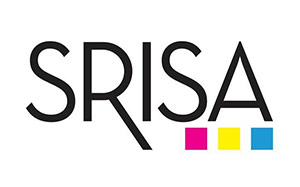
Santa Reparata International School of Art (SRISA) is an independent, non-profit institution established in 1970. SRISA upholds a strong reputation in studio art and liberal arts instruction, and is comprised of two campuses near the historic convent of San Marco.
SRISA’s hands-on studio art and lecture courses provide an enriching study abroad experience in the city where the Renaissance began. Your classes will expose you to Florence’s rich cultural heritage and encourage you to use Florentine artistic tradition to inform your own work. In addition to the fine arts, SRISA has also created a department dedicated to the study of design.
As a CEA CAPA student at SRISA, you’ll have access to drawing, painting, fashion, and photography studios, as well as printing presses after classroom hours. Computers are available for design courses, as is an extensive library.
Maryville University & SRISA Course Numbering System
Maryville University and SRISA have a slightly different system for numbering courses. In general, lower division courses correspond to 1st and 2nd year courses at the U.S. university level. Most of these courses do not require pre-requisites. Upper division courses correspond to 3rd and 4th year courses at the U.S. university level. These courses require either a pre-requisite or a placement exam.
|
Maryville University Course Numbering System |
SRISA Course Numbering System |
|
100-299: Lower Division Courses |
1000: Lower level, Freshman |
SRISA curricula and class schedules follow a U.S. university model. Credit transfer is ultimately determined by your home university. Please consult with an academic advisor at your home university on credit pre-approval guidelines.
As SRISA alone is not an accredited institution, SRISA has a School of Record relationship with Maryville University in St. Louis (accredited by The Higher Learning Commission, North Central Association of Colleges and Schools), which grants credit for courses successfully completed at SRISA during the semester and summer academic programs. In addition to the SRISA transcript, you’ll receive a Maryville University transcript representing the work completed at SRISA. While CEA CAPA recommends using the Maryville University course code designations and transcript for credit transfer purposes, it is at the discretion of your home institution to determine the transfer of credit for SRISA courses. Please check with an academic advisor at your home institution for transferability of SRISA/Maryville University credit.
SRISA is recognized by the Italian Ministry of Education as an educational institution. SRISA is affiliated with a School of Record, Maryville University in St. Louis, which is fully accredited through The Higher Learning Commission, North Central Association of Colleges and Schools.









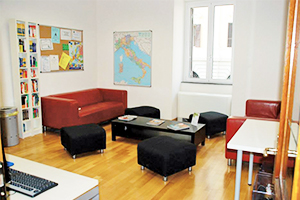

Located in the historic surroundings of Italy’s capital city, the CEA CAPA Rome Center offers interdisciplinary programs spanning business, politics, Italian language, cultural studies, and liberal arts. With the great city of Rome as your classroom, you can choose courses offered in both Italian and English, and enjoy the opportunity to improve your language skills and further your academic pursuits while immersed in a historic cosmopolitan setting. Designed to exploit the natural strengths of Rome's modern pace as well as its historic past, the curriculum at the CEA CAPA Rome Center offers you distinct study tracks, based on the study of Italian language & culture, business, politics, and history.
Whatever program you choose, you’ll engage in activities designed to take the curriculum out of the classroom and into the community, like visits to galleries, museums, city council chambers, local businesses, food markets, and artisan’s workshops, as well as first-hand encounters with artists, architects, local business people, writers, curators, and Italian students. Even outside school hours, we’ll encourage you to apply lessons learned in class to real-life, drawing connections between your studies and the daily life of your host community. This ongoing, active, and reflective structure of study not only helps you gain historical and social understanding, but helps you develop the international cultural fluency you need in an increasingly globalized world.
The CEA CAPA Rome Center also helps you critically reflect upon and articulate your own national, cultural, and social identities. Active class participation provides the opportunity for interaction and collaboration, both critical factors in academic and professional success. CEA CAPA Rome Center faculty are committed to fostering students’ intellectual and cultural growth through simulated debates, multi-media research presentations, and round-table discussions.
Courses at the CEA CAPA Rome Center are transcripted by the University of New Haven (UNH), CEA CAPA’s School of Record.
Courses taught at the CEA CAPA Rome Center have been designed in conjunction with, and approved by, the University of New Haven (UNH). In addition, faculty appointments have been approved by UNH. After the successful completion of a session at the CEA CAPA Rome Center, you will receive credit for your work from UNH. Located in Connecticut, the University of New Haven is a student-focused, comprehensive university that’s fully accredited by the New England Commission of Higher Education (NECHE). The agreement between CEA CAPA and UNH follows the highest standards of good practice in education abroad and satisfies the rigorous requirements of the University's institutional accreditor, making credits earned at the CEA CAPA Rome Center easily transferable to US-accredited institutions. Learn more about UNH's service as the School of Record for CEA CAPA
Professors at the CEA CAPA Rome Center will carefully evaluate your work and progress throughout the academic session. When calculating final grades, instructors consider written and oral exercises, homework assignments, attendance, classroom participation, and exam performance.
The following grading scale is in use for CEA CAPA center-delivered syllabi:
| DESCRIPTOR | ALPHA | NUMERIC | GPA | REQUIREMENT/EXPECTATION |
|---|---|---|---|---|
| Outstanding (High Distinction) |
A | 93+ | 4.0 | Maximum grade: In addition to description for grade "A-", the participant shows detailed understanding of materials about which he or she can show independent analytical ability. This means the ability to question an issue from different perspectives and evaluate responses in an objective manner. |
| Excellent (Distinction) |
A- | 90 - 92.99 | 3.7 | Participant shows understanding of literature beyond the textbook/class hand-outs/class notes, and the work shows a high level of independent thought, presents informed and insightful discussion, and demonstrates a well-developed capacity for evaluation. |
| Very good (High Credit) |
B+ | 87 - 89.99 | 3.3 | Shows evidence of a capacity to generalize from the taught content, or the material in literature, or from class lectures in an informed manner. Also, the work demonstrates a capacity to integrate personal reflection into the discussion and an appreciation of a range of different perspectives. |
| Good (Credit) |
B | 83 - 86.99 | 3.0 | The work is well-organized and contains coherent or logical argumentation and presentation. |
| Good (Credit) |
B- | 80 - 82.99 | 2.7 | Participant shows understanding of literature beyond the textbook and/or notes, and there is evidence of additional reading. |
| Average (Good Pass) |
C+ | 77 - 79.99 | 2.3 | The work demonstrates a capacity to integrate research into the discussion and a critical appreciation of a range of theoretical perspectives. Also, the work demonstrates a clear understanding of the question and its theoretical implications and demonstrates evidence of additional reading. |
| Adequate (Pass) |
C | 73 - 76.99 | 2.0 | Shows clear understanding and some insight into the material in the textbook and notes, but not beyond. A deficiency in understanding the material may be compensated by evidence of independent thought and effort related to the subject matter. |
| Below Average (Borderline Pass) |
C- | 70 - 72.99 | 1.7 | Shows some understanding of the material in the textbook and notes. A deficiency in any of the above may be compensated by evidence of independent thought related to the subject matter. |
| Inadequate (Borderline Fail) |
D+ | 67 - 69.99 | 1.3 | Fails to show a clear understanding or much insight into the material in the textbook and notes. |
| Poor (Fail) |
D | 60 - 66.99 | 1.0 | Besides the above for D+, participant has not shown interest or engagement in the class work or study. |
| Poor (Fail) |
F | <60 | 0 | Shows little or no understanding of any of the material. |
Faculty are bilingual (English/Italian) and represent diverse backgrounds.
Periodic exams, homework assignments, and final exams will be administered.
Attendance in all classes is mandatory and monitored by each professor.
You’ll attend class with other CEA CAPA students of equivalent language levels, not with native Italian students.
Teaching styles in Italy may differ from those in the U.S. Be prepared to adapt to different classroom structures and coursework expectations.














